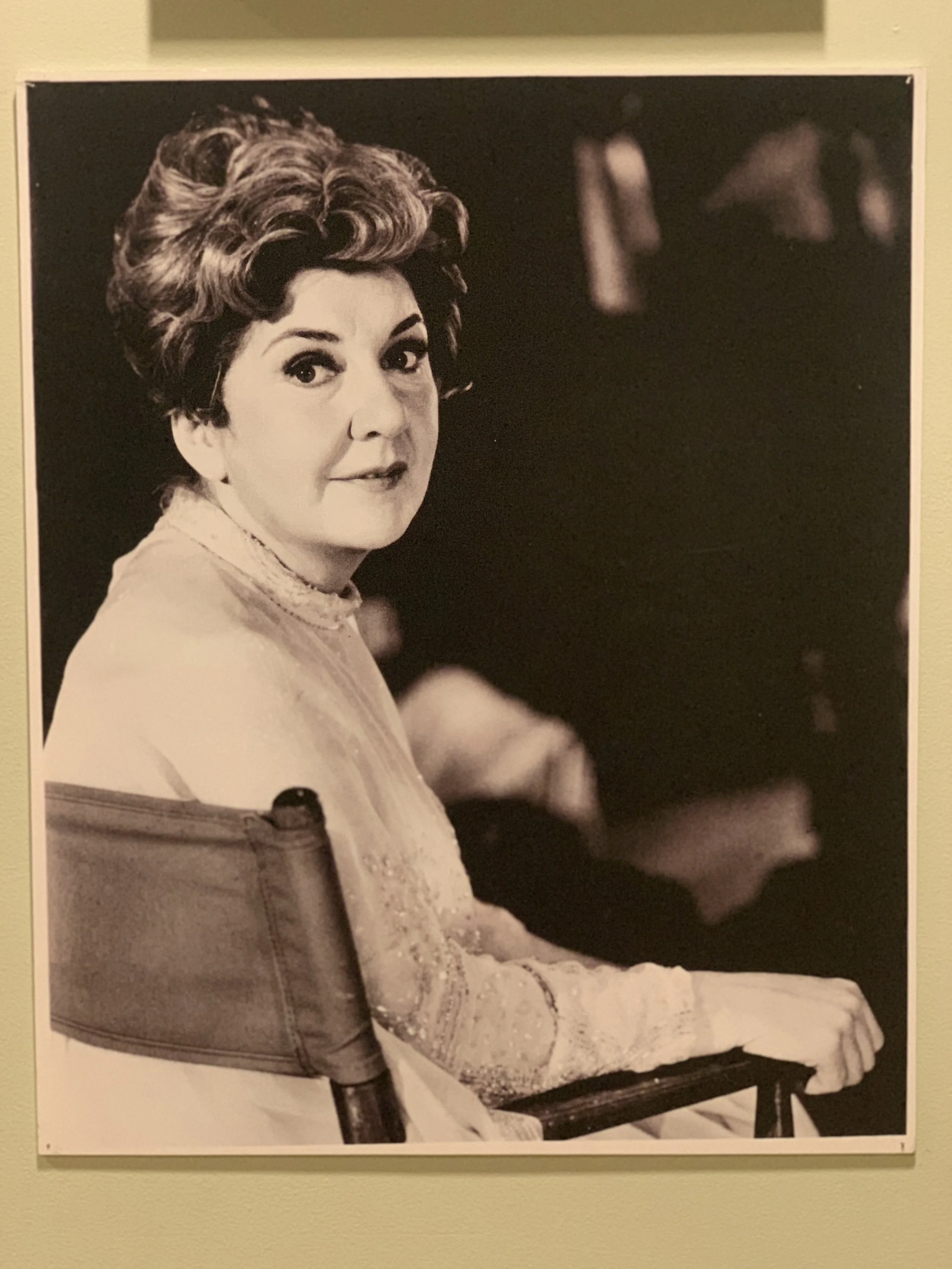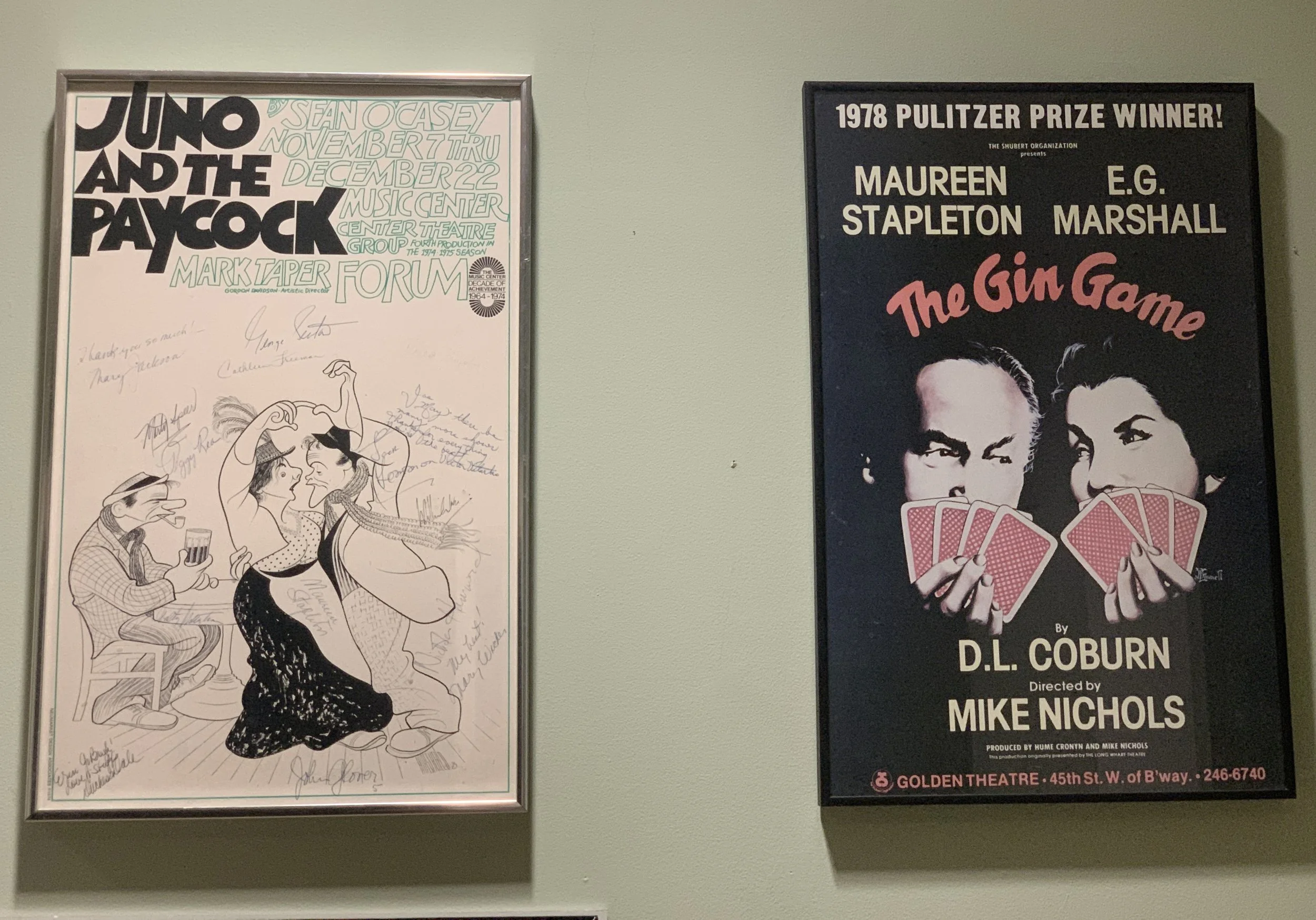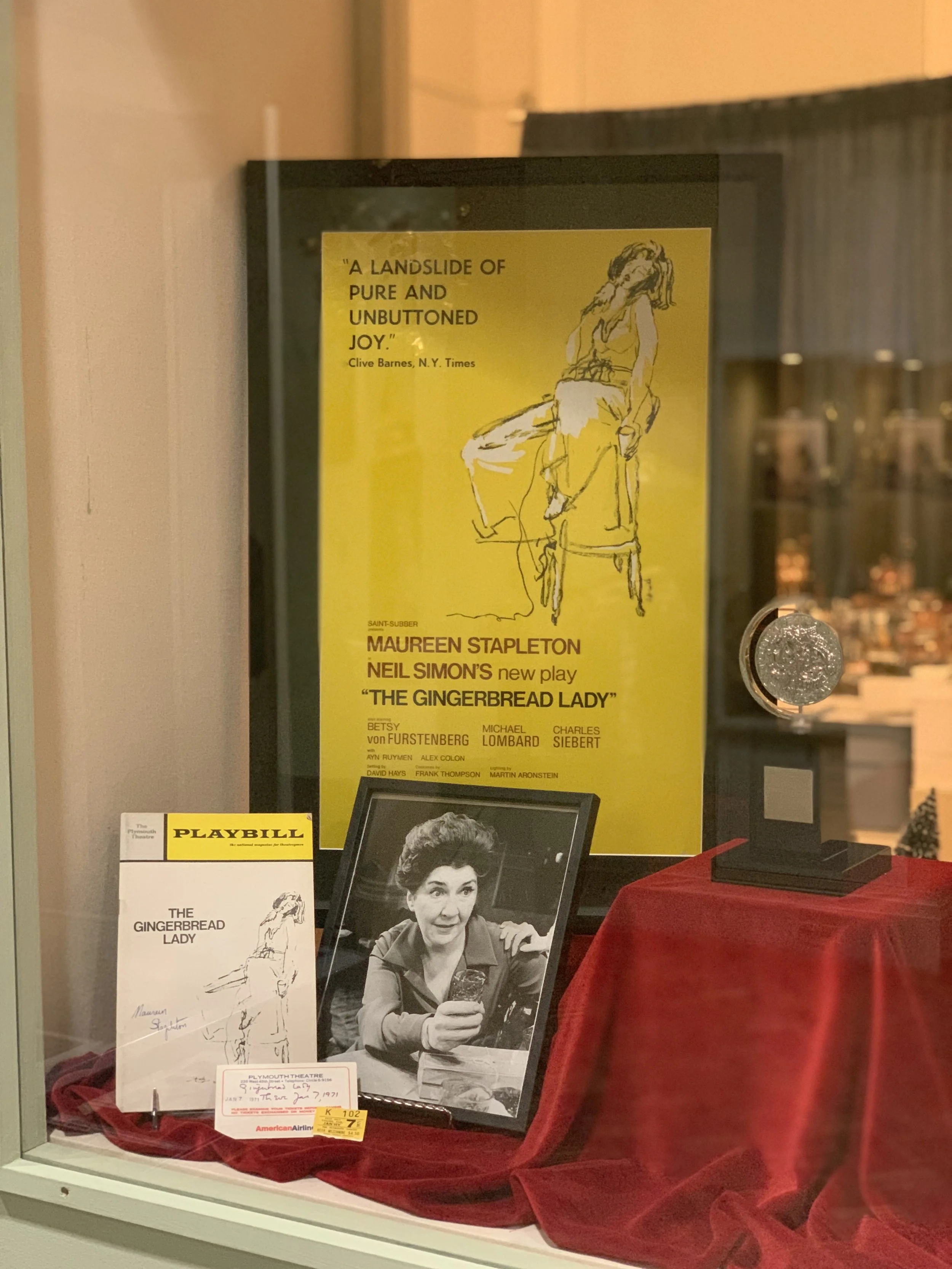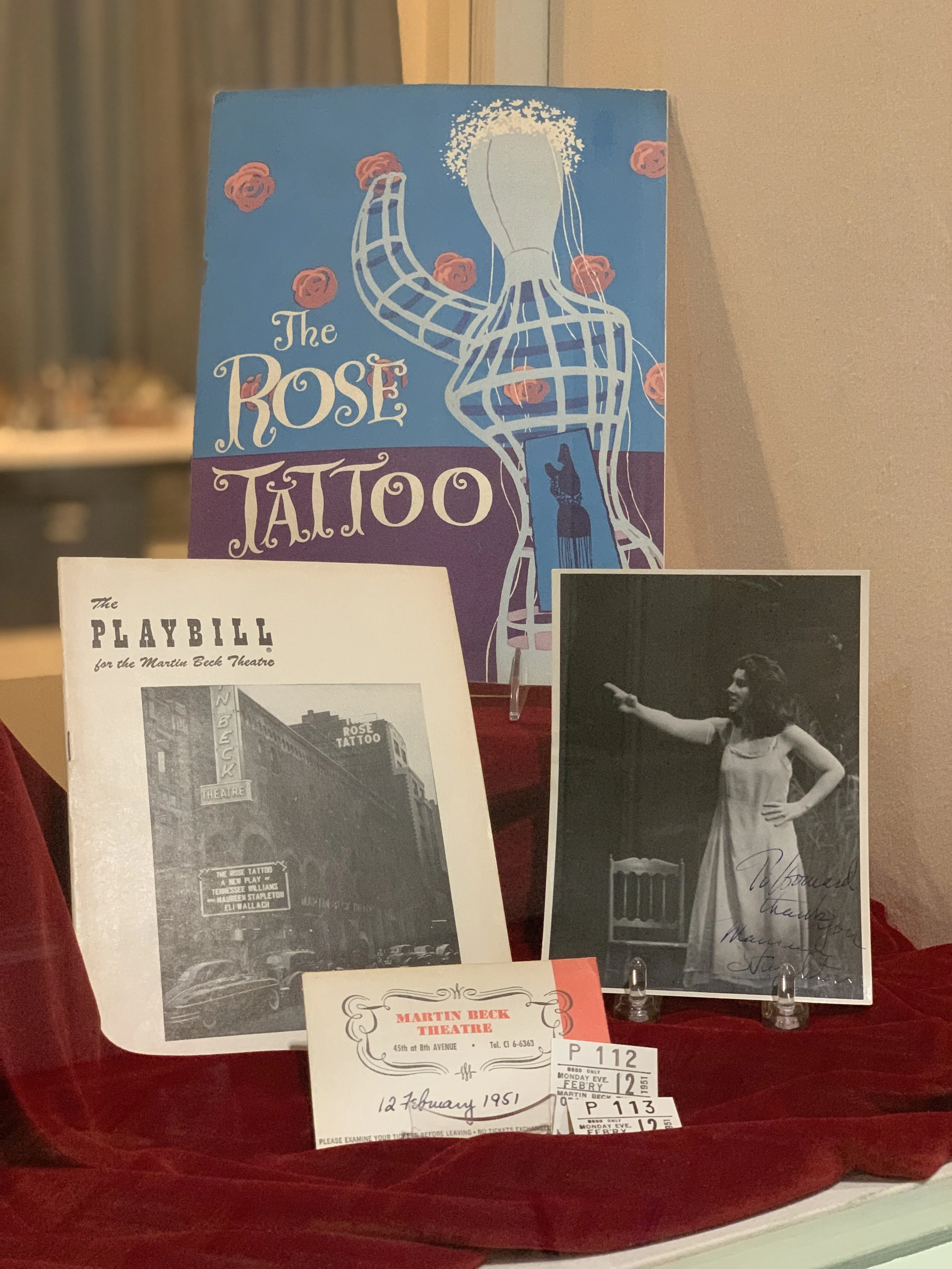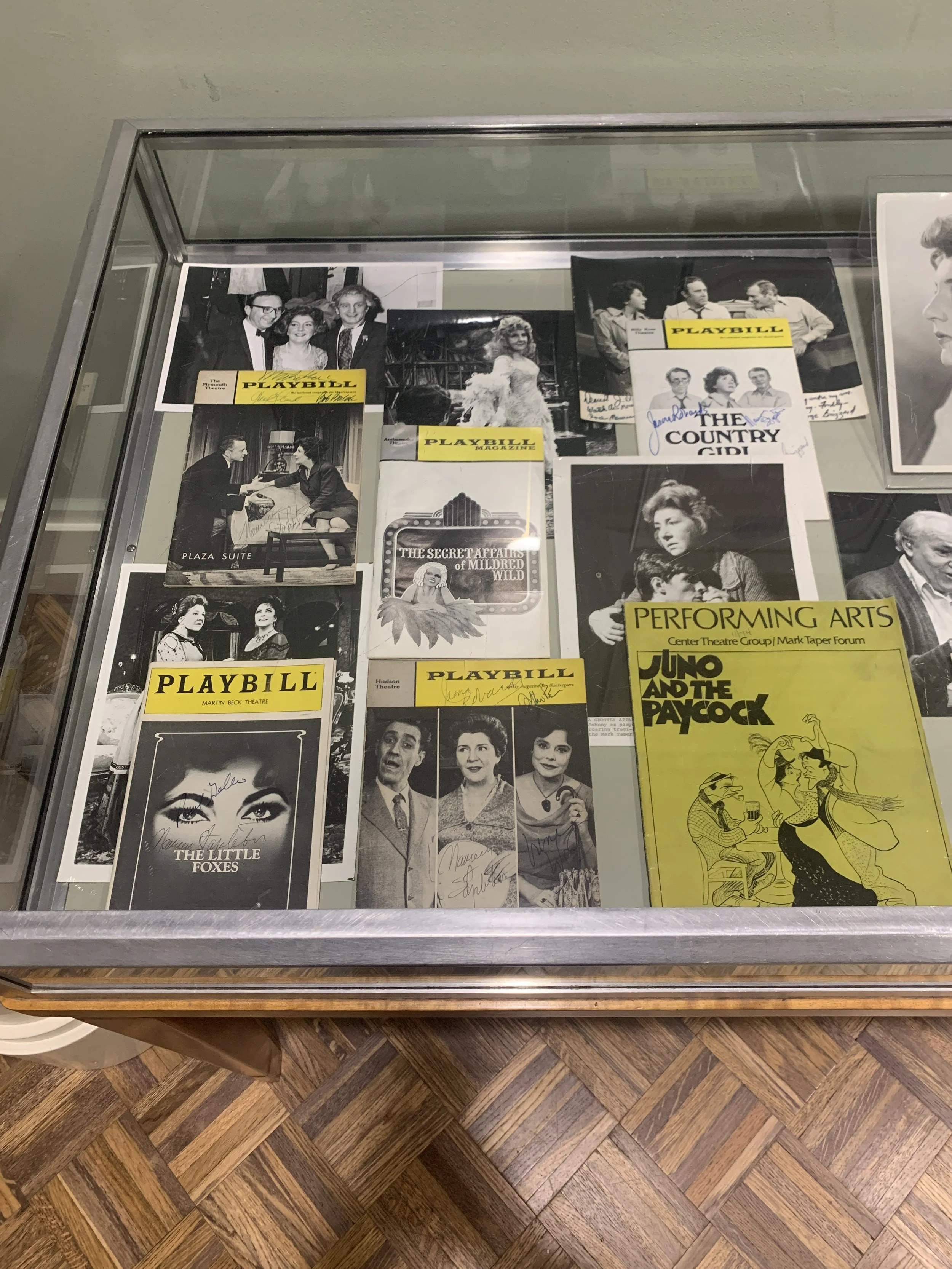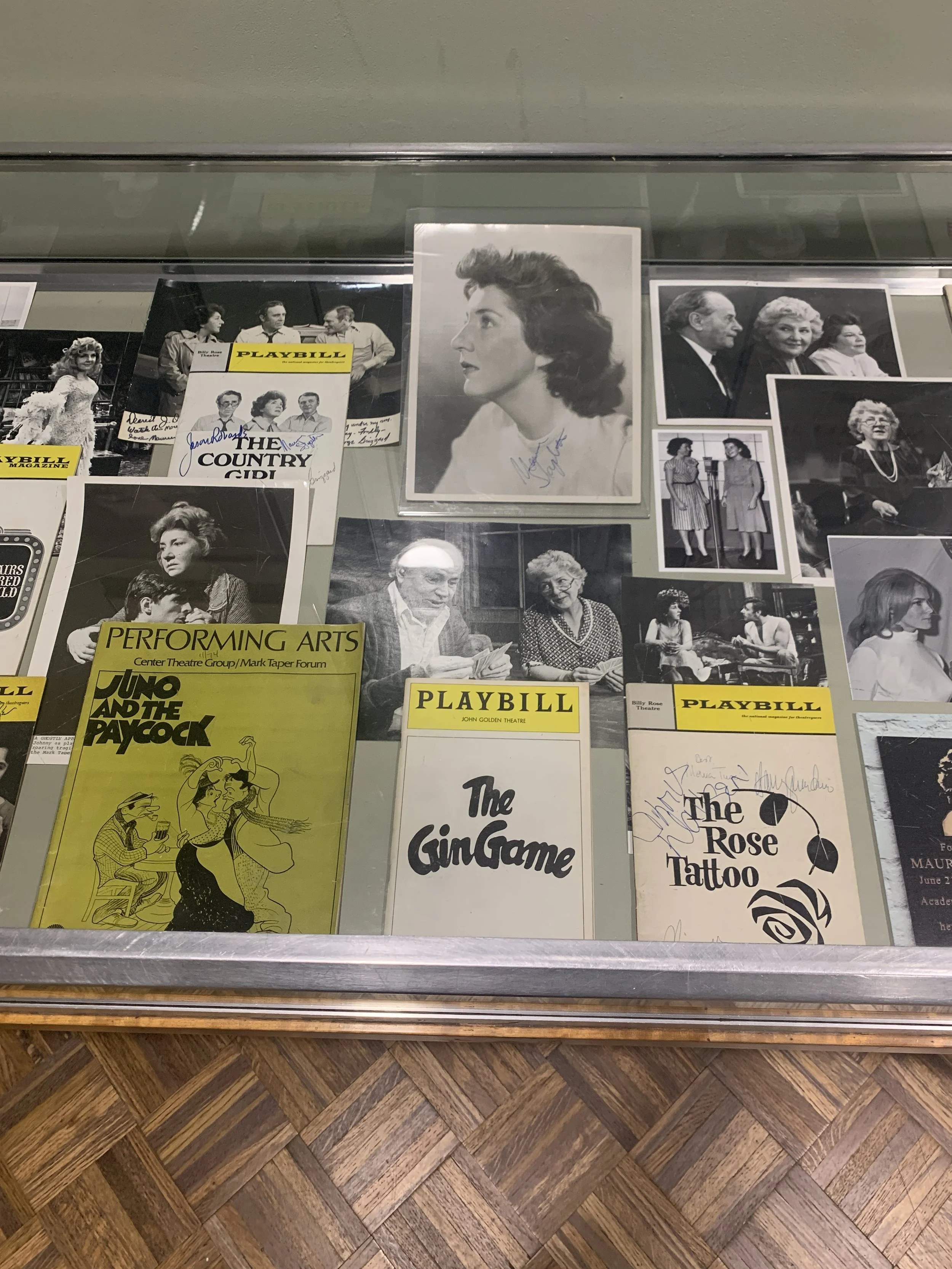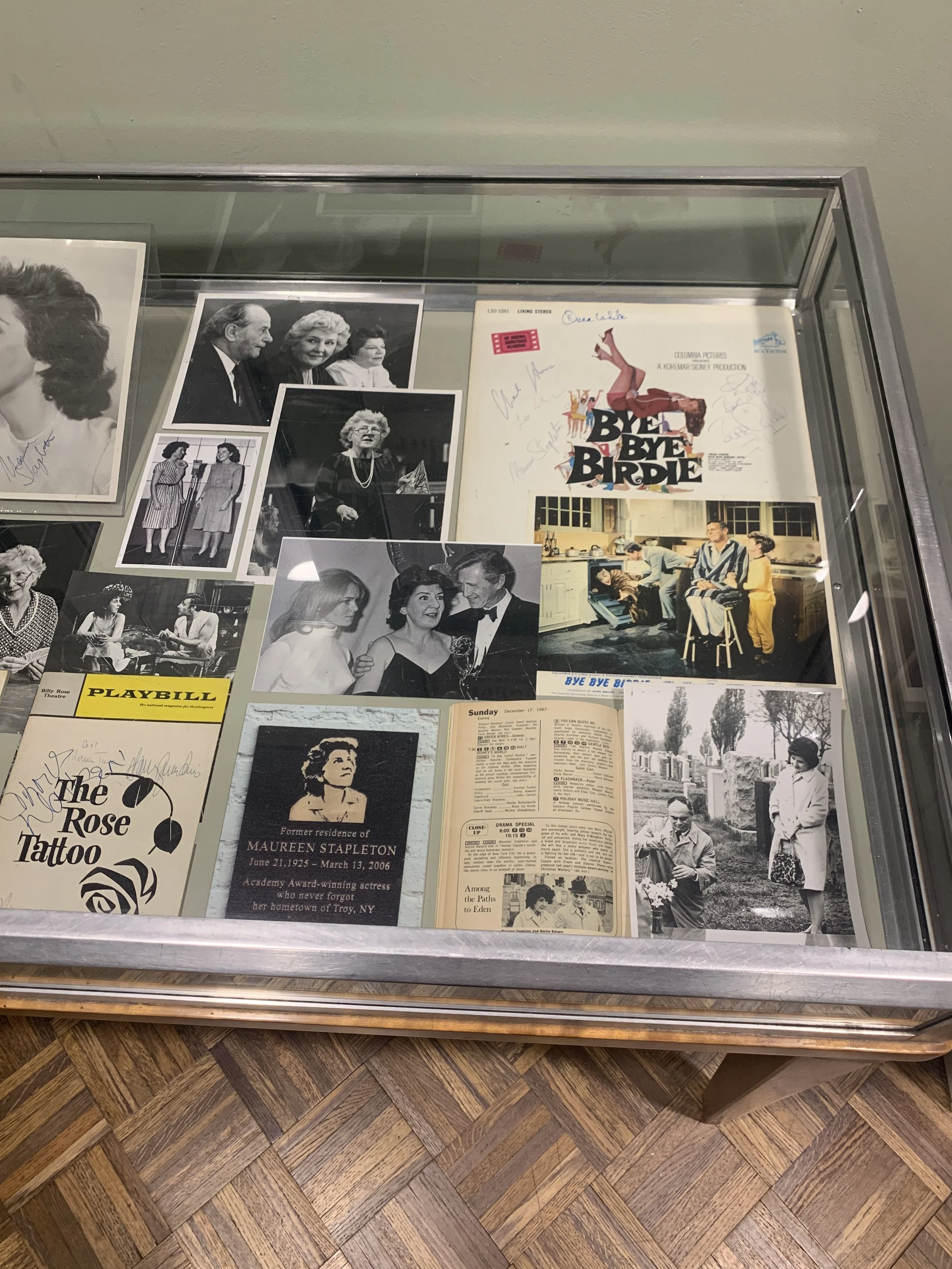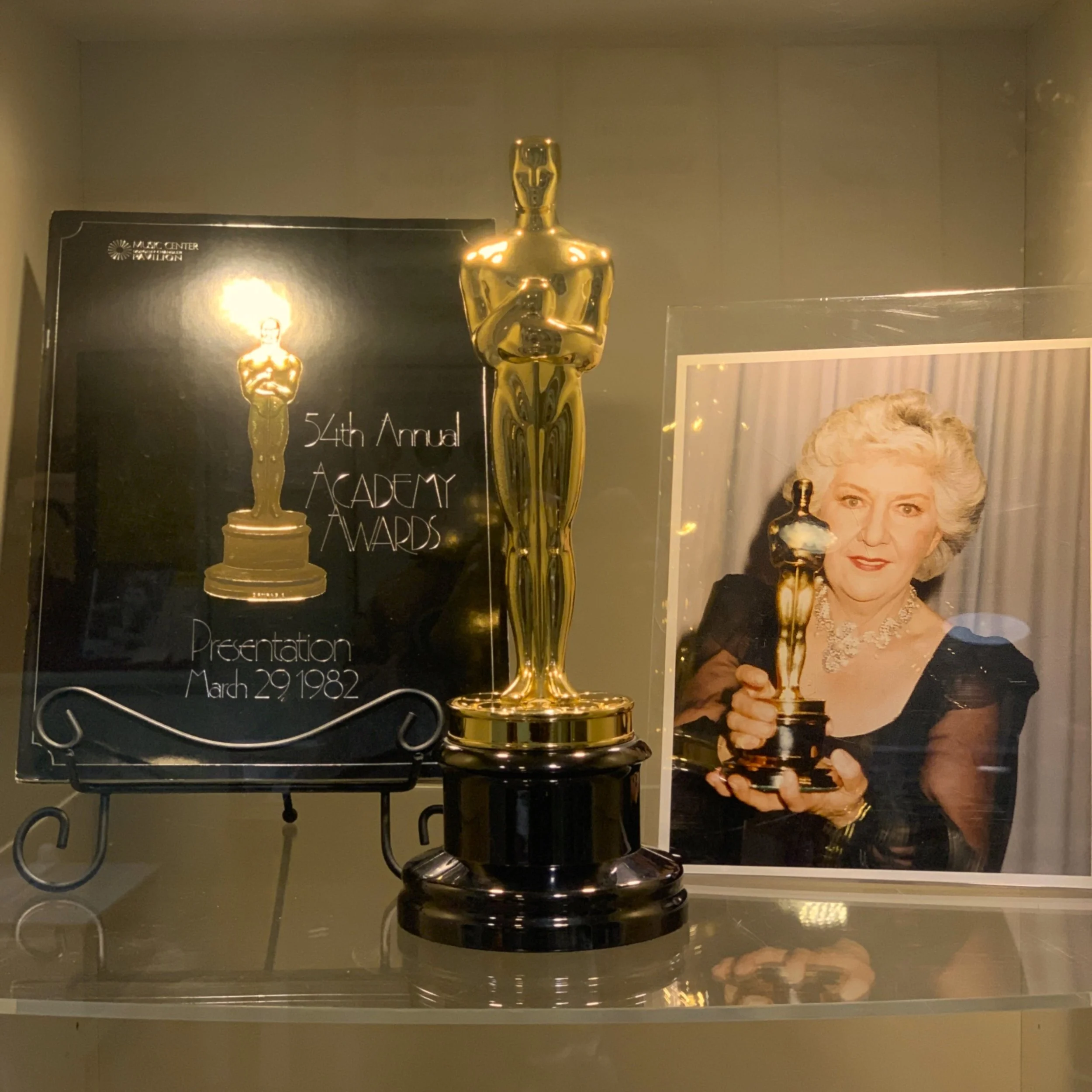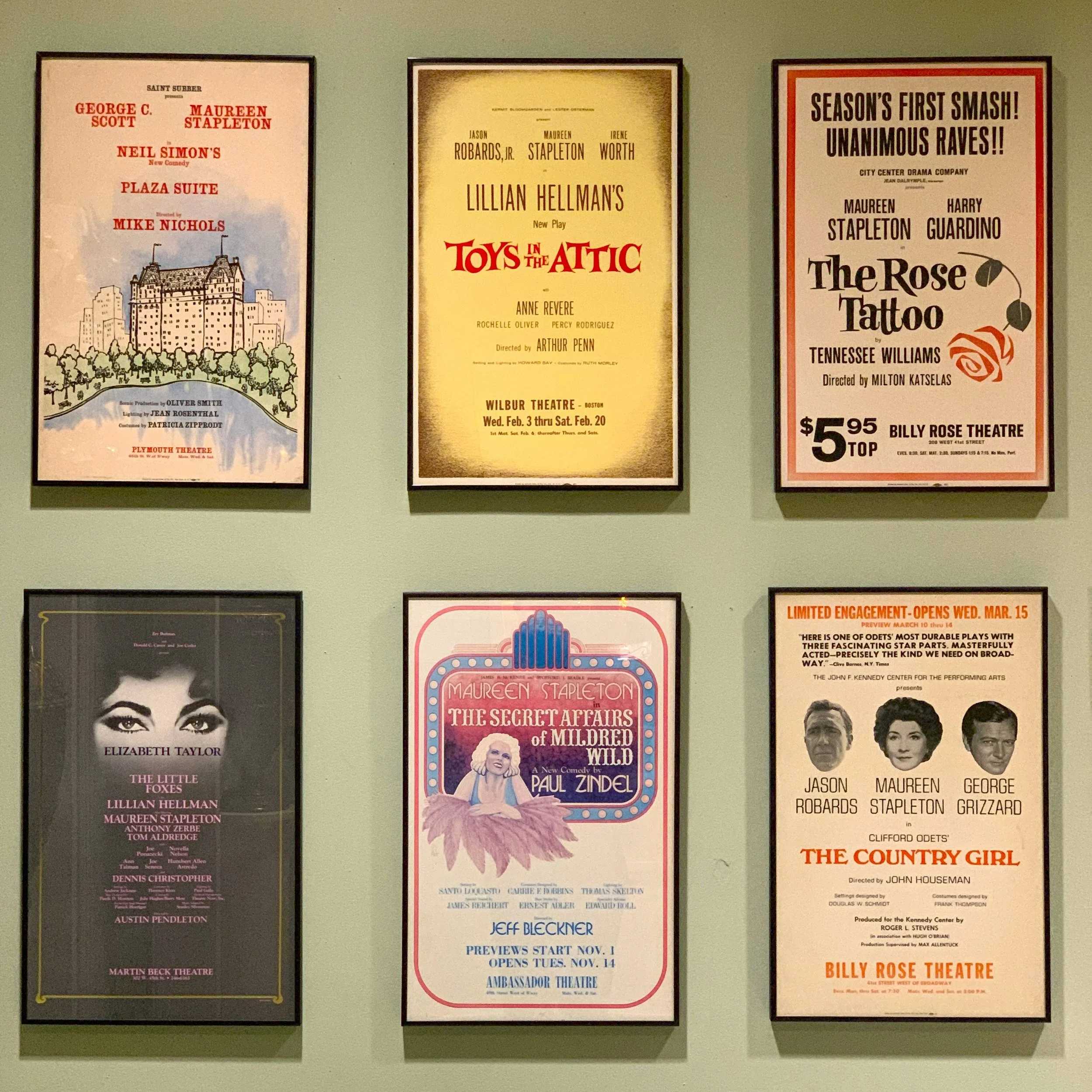A Centennial Celebration!
Actor & Troy Native, Maureen Stapleton
From her debut on Broadway in the 1946 revival of Sean O’Casey’s, The Playboy of the Western World, to her last film credit in the 1997 romantic comedy, Addicted to Love, the Oscar, Emmy, Tony, BAFTA and Golden Globe award-winning actor and Troy native, Maureen Stapleton, (1925-2006) enchanted audiences for more than 50 years on stage and screen.
Growing up in a multi-cultural neighborhood on First Street near Adams Street in Troy, Maureen channeled the many personalities she grew up with, bringing that essence to life in memorable performances such as The Rose Tattoo, The Gingerbread Lady, and Reds.
This exhibition is in honor of what would have been Maureen’s 100th birthday on June 21, highlighted by recent additions to the Maureen Stapleton archives by Ron Jacobs, Willian G. Carey Jr. and Hudson Valley Community College and loans from Willian G. Carey Jr.
With $100 in her pocket, Maureen Stapleton, like many aspiring actors before her, left Troy in September 1943 for the larger stage and possibilities of New York City. Struggling to find her niche, and for a time with her mother there as well, she did odd jobs (hotel clerk, “Ordinette” for the Chrysler exhibit of weaponry, artist’s model, etc.) and took acting classes, delving into the details of her craft.
New York City theater was in its heyday at the time, and she was able to meet up with several other aspiring actors of her generation and to be in on the beginning of what became the Actors Studio. Her first break came in The Playboy of the Western World in 1946. From that time on she continued to work in theater until her last stage performance with Elizabeth Taylor in a revival of Lillian Hellman’s The Little Foxes in 1981. Her key role, and one of her favorite parts, was as Serafina della Rose in The Rose Tattoo for which she won the first of two Tony Awards (Best Featured Actress - Dramatic) in 1951. The second Tony (Best Actress - Dramatic), twenty years later in 1970, was for the role in The Gingerbread Lady created for her by Neil Simon.
The items in this case include the Lobby Card, program, tickets, and photographs for The Gingerbread Lady and The Rose Tattoo. If you look carefully at the playbill cover for The Rose Tattoo you will see Maureen’s name on the marquee!
Lobby cards and Playbills.
Lobby Cards were promotional items widely used by movie studies since the early days of cinema to advertise their films. Typically, the cardstock posters were 11”x14” cardstock posters that were displayed in the lobbies of theaters to entice moviegoers to see the featured film.
Playbills were first incorporated in the late 19th and early 20th centuries, companies and like Frank Vance Strauss’s company, later known as Playbill, transformed the theater program into a magazine-like publication with standardized covers, advertising, and dedicated readership. The name “Playbill” became associated with the company’s publications in the 1930s, and the familiar yellow cover became the standard in the 1970’s.
Academy Award Winner for the film, Reds!
As a young girl in Troy, Maureen Stapleton began a love affair with the silver screen and the glamorous stars of the 1930s and 1940s that continued through her life. By 1959, when she was cast in Lonelyhearts with Myrna Loy and Montgomery Clift, Hollywood reached deeply into the American psyche. Her performance received both Golden Globe and Oscar nominations and started her more than a quarter century film career during which she made 27 films.
Developing friendships with a number of well-known film stars, she also worked with major directors. She won a Golden Globe Award in 1970 for Airport (Best Supporting Actress in a Motion Picture) for which she was also nominated for an Oscar.
Her role as Emma Goldman in Reds in 1981 finally brought her an Oscar (Best Actress in Supporting Role) as well as the British Academy of Film & Television Award (Best Supporting Actress). It was the third movie she made in 1981, and one of a total of eleven she made in the decade of the 1980s.

